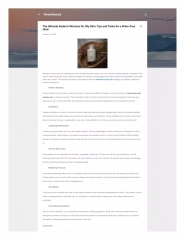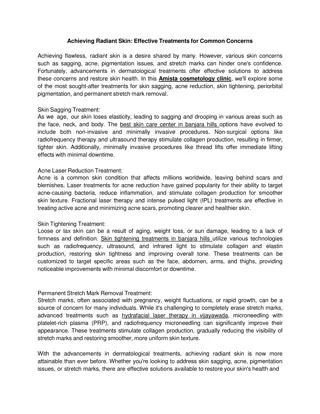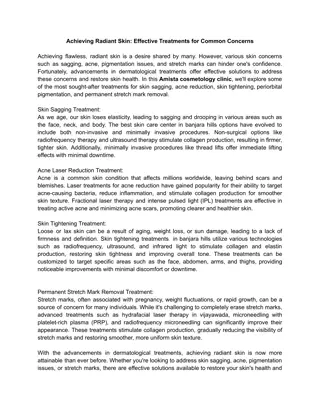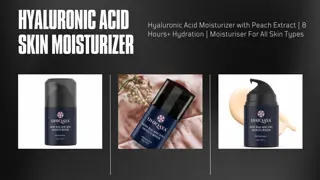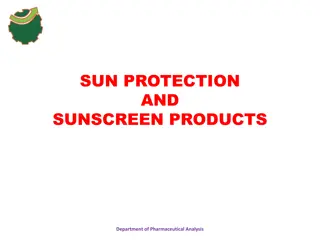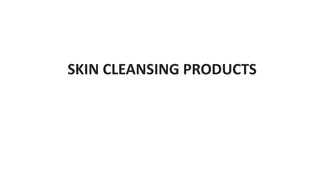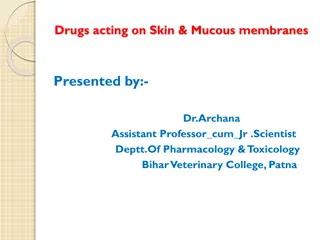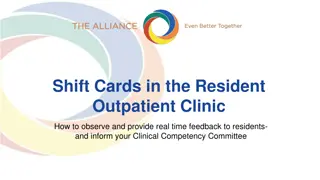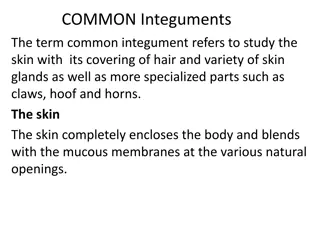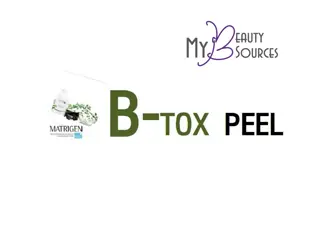Common Skin Findings in Outpatient Setting
Pityriasis Rosea is a benign viral exanthem presenting with a herald patch and generalized eruption, often accompanied by pruritis. Treatment involves reassurance, topical steroids, and oral antihistamines, and usually resolves within 12 weeks. Seborrheic Dermatitis is a papulosquamous disorder characterized by varying appearances and typically affecting sebum-rich areas. Management includes early treatment of flares with topical steroids and specific shampoos. Allergic Contact Dermatitis involves a sensitization phase following exposure to allergens.
Download Presentation

Please find below an Image/Link to download the presentation.
The content on the website is provided AS IS for your information and personal use only. It may not be sold, licensed, or shared on other websites without obtaining consent from the author.If you encounter any issues during the download, it is possible that the publisher has removed the file from their server.
You are allowed to download the files provided on this website for personal or commercial use, subject to the condition that they are used lawfully. All files are the property of their respective owners.
The content on the website is provided AS IS for your information and personal use only. It may not be sold, licensed, or shared on other websites without obtaining consent from the author.
E N D
Presentation Transcript
Cutaneous Findings Encountered in the Outpatient Setting
Pityriasis Rosea Benign exanthem likely viral in origin Linked to URIs, can present in many family members Occasional pruritis (75%, severe in 25%)
Pityriasis Rosea Herald Patch Single pink patch 2-10 cm in diameter On neck or trunk with fine scale Found in greater than 50% of patients Generalized Eruption 1-2 weeks after appearance of herald patch Salmon colored macules with fine scale Organized in linear fashion along cleavage lines
Treatment Reassurance Pruritis relief topical steroids, oral antihistamines, oatmeal baths NO USE for systemic steroids UVB light may be necessary Usually resolves by 12 weeks
Pityriasis Rosea Click to see larger picture Click to see larger picture
Seborrheic Dermatitis Papulosquamous disorder occuring on sebum-rich areas of face, scalp, trunk Intermittant active phases burning, scaling, itching Can be complicated by secondary infections Activity increased in winter, early spring
Seborrheic Dermatitis Appearance varies from mild, patchy scaling to thick, adherent crusts Scaling over red, inflamed skin Hypopigmentation in dark-skinned races Distribution oily and hair-bearing areas Typically an annular scaling
Treatment Early treatment of flares encouraged Topical steroids for short-term use ONLY Sulfur, sulfonamide preparations, ketoconazole gels Dandruff long periods of lathering; shampoos with selenium, sulfer, zinc, salicylic acid
Seborrehic Dermatitis Click to see larger picture Click to see larger picture
Allergic Contact Dermatitis Initial Sensitization phase (10-14 days) T-cell mediated immune response Once sensitized rash develops within hours to several days after exposure Can occur over existing skin pathology (i.e. neomycin rxtns on stasis ulcers)
Allergic Contact Dermatitis Pruritic papules and vesicles on an erythematous base Lichinified plaques may exist in chronic ACD Location can give important clues as to causation
ACD Hands: an important site of ACD, particularly in the workplace. Common causes include the chemicals in rubber gloves. Perianal: frequent in the perianal area as a result of the use of sensitizing medications and remedies (eg, topical benzocaine). Otitis externa: Topical medications Airborne ACD: Chemicals in the air. Usually occurs maximally on the eyelids, but imay affect other areas, particularly the head and the neck. Ophthalmologic: chemicals in ophthalmologic preparations may provoke dermatitis around the eyes. Hair dyes: Individuals allergic to hair dyes typically develop the most severe dermatitis on the ears and adjoining face rather than on the scalp. Stasis dermatitis and stasis ulcers: Individuals with stasis dermatitis and stasis ulcers are at high risk for developing ACD to topical medications applied to inflamed or ulcerated skin. May develop widespread dermatitis from topical medications applied to leg ulcers or from cross-reacting systemic medications administered intravenously. A patient allergic to neomycin may develop systemic contact dermatitis if treated with intravenous gentamicin.
ACD 25 chemicals responsible for approximately of all cases Poison ivy, nickel, chemicals in rubber gloves, dyes and chemicals in textiles, preservatives in moisturizers, cosmetics, topical meds, formaldehyde, fragrance, topical corticosteroids, neomycin, benzocaine, preservatives in sunscreen
ACD Can be diagnosed with Patch testing Treatment Cool compresses, lukewarm oatmeal baths Oral antihistamines Corticosteroids In severe cases 2 weeks of po steroids starting at 40-60 mg and tapering Immunosuppressive agents (Imuran, Neoral) may be needed in severe, recalcitrant cases
Allergic Contact Dermatitis Click to see larger picture Click to see larger picture Click to see larger picture
Folliculitis Results from obstruction/disruption of hair follicles Can result from infection or physical/chemical irritation May cause mild discomfort/pruritis Lesion is papule/pustule with central hair May be bacterial (staphylococcal, gram negative), fungal (pityrosporum), viral (HSV), irritant
Folliculitis Can empirically treat based on history/physical exam If resistant to therapy, cultures, Gram stain, KOH prep, and biopsy are the diagnostic tests of choice Nasal culture of family members to look for S aureus colonization may be needed in chronic cases
Folliculitis Click to see larger picture Click to see larger picture Click to see larger picture
Rosacea Common condition -- facial flushing, erythema, telangiectasia, coarseness of skin, an inflammatory papulopustular eruption resembling acne Rhinophyma -- may occur as an isolated entity; can be disfiguring Lymphoedema may be marked periorbitally Ocular rosacea may be accompanied by conjunctival injection, and rarely, chalazion and episcleritis
Rosacea Treatment Tetracycline 250 mg 500 mg tid for acneiform lesions; treat 2-4 mos Topical metronidazole Accutane Ocular rosacea tetracycline for minimum of 3 mos
Rosacea Click to see larger picture Click to see larger picture
Tinea Corporis A superficial dermatophyte infection of the glabrous skin of the skin; inflammatory lesions and noninflammatory lesions Infection occurs through contact with infected humans, animals, or inanimate objects Pruritic annular plaque is characteristic of a symptomatic infection
Tinea Corporis Lesion typically begins as an annular, erythematous, papulosquamous lesion May grow rapidly; may become annular in shape after central resolution occurs Scaling, crusting, vesicle formation, and papules may also be present
Tinea Corporis Dermatophytes rarely invade living tissues Topical therapy is recommended for localized cases - should be applied to an area at least 2 cm beyond the edge of the identified lesion once or twice a day for at least 2 weeks Systemic therapy -- for cases of tinea corporis that are extensive, those that involve patients who are immunocompromised, or those that are not responsive to topical therapy
Tinea Corporis Click to see larger picture Click to see larger picture
Granuloma Annulare A benign inflammatory dermatosis -- dermal papules and annular plaques Its precise cause is unknown Asymptomatic cutaneous lesions Few to thousands of 1- to 2-mm papules or nodules that range in color from flesh- toned to erythematous
GA Hypothesized to be associated with tuberculosis, insect bites, trauma, sun exposure, thyroiditis, and viral infections, including HIV, Epstein-Barr virus, and herpes zoster virus Intralesional corticosteroid is the most uniformly successful therapy
GA Spontaneous resolution occurs within 2 years in 50% of cases, although lesions may last weeks to decades Recurrence, often at the same site, is noted in 40% of cases




